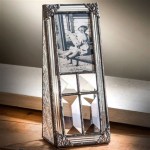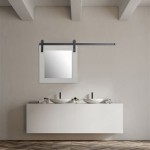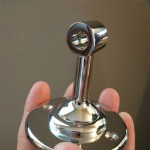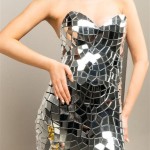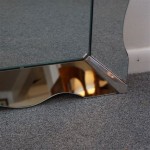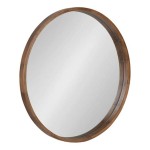Which Type of Mirror is Used in Headlamp Cars?
Car headlights are essential safety features designed to illuminate the road ahead, enhancing visibility during nighttime driving conditions. The effectiveness of headlights relies on the efficient reflection of light, which is achieved through the use of specialized mirrors. These mirrors, known as parabolic reflectors, play a crucial role in directing the emitted light in a controlled and focused manner.
Parabolic reflectors are named after their shape, which is a three-dimensional curve resembling a parabola. The unique geometry of this shape allows for the precise reflection of light rays emitted from a light source placed at the focal point of the parabola. This focal point is a specific point within the parabolic surface, where all light rays converge after reflection. When properly positioned, a light source at the focal point ensures that all reflected rays travel parallel to the axis of the parabolic reflector, resulting in a concentrated and uniform beam of light.
Advantages of Parabolic Reflectors
The utilization of parabolic reflectors in car headlights offers numerous advantages that contribute to improved visibility and safety:
1. Enhanced Light Concentration
Parabolic reflectors excel at concentrating light into a focused beam, effectively illuminating the road ahead. The parallel rays produced by the reflector minimize scattering and maximize the intensity of the light beam, ensuring optimal visibility for the driver.
2. Extended Range of Illumination
The focused beam of light generated by parabolic reflectors extends the range of illumination significantly compared to conventional reflectors. This extended range allows drivers to perceive obstacles and potential hazards earlier, providing crucial reaction time and minimizing the risk of accidents.
3. Reduced Glare
The parabolic design helps minimize glare for oncoming drivers. The light is directed primarily towards the road surface, reducing the amount of light bouncing off the reflectors and into the eyes of other motorists.
Types of Parabolic Reflectors in Headlights
Several types of parabolic reflectors are employed in car headlights, each with its specific characteristics and applications:
1. Single Parabolic Reflector
This type of reflector uses a single parabolic surface to focus the light from a single bulb. It is the most common type of reflector used in traditional halogen headlights. The single reflector design is straightforward and cost-effective, offering sufficient illumination for most driving conditions. However, it may lack the precision and control of other reflector types.
2. Multi-Reflector Headlights
Multi-reflector headlights, also known as "sealed beam" headlights, utilize multiple parabolic reflectors within a single unit to create a more complex light pattern. These systems often incorporate multiple bulbs for different functions, such as high beams, low beams, and turn signals. This design allows for more precise control over the distribution of light, enhancing visibility and safety.
3. Projector Headlights
Projector headlights incorporate a lens in addition to the parabolic reflector. The lens acts as a secondary optical element that focuses the light further, producing a sharper and more defined beam. Projector headlights often feature a "cut-off" line, which prevents glare from blinding oncoming drivers. This advanced technology offers exceptional illumination quality and precise control over the light beam.
4. LED Headlights
LED headlights utilize arrays of light-emitting diodes (LEDs) as the light source. They often incorporate a combination of parabolic reflectors and lenses to focus and direct the light from multiple LEDs. LED headlights offer several advantages, including superior energy efficiency, longer lifespan, and brighter illumination with a wider color spectrum.
The choice of reflector type depends on various factors, including vehicle design, budget, and desired performance characteristics. While traditional single-reflector headlights remain a popular choice, advances in technology have led to the adoption of more sophisticated reflector systems, such as multi-reflector and projector headlights, offering enhanced illumination and safety features.
Which Mirror Is Used In The Headlight Of A Car Quora
Which Type Of Mirror Is Used In A Headlight On Car It Spherical Concave Or Parabolic Quora

Which Type Of Mirror Is Used In Headlights Vehicles

Which Mirror Is Used In The Headlights Of A Car

Car Headlights

State The Type Of Mirrors Used For I Headlights And Ii Rearview In Cars Motorcycles Give Reason To Justify Your Answer Each Case

Why Headlights Used Concave Mirror
Why Do We Use A Concave Mirror In Car Headlights Quora

Headlight Automobile

Why Are Concave Mirrors Used In Headlights Socratic

